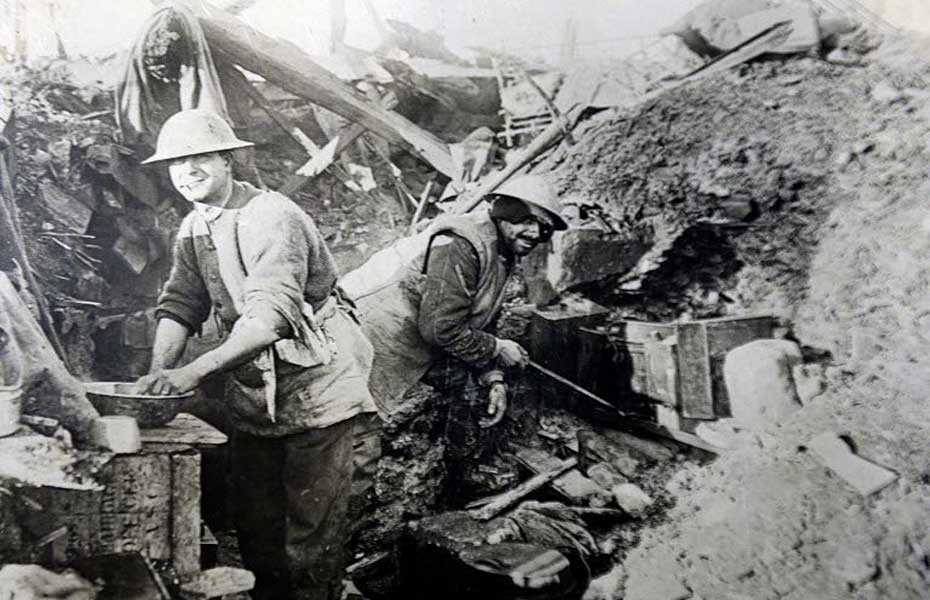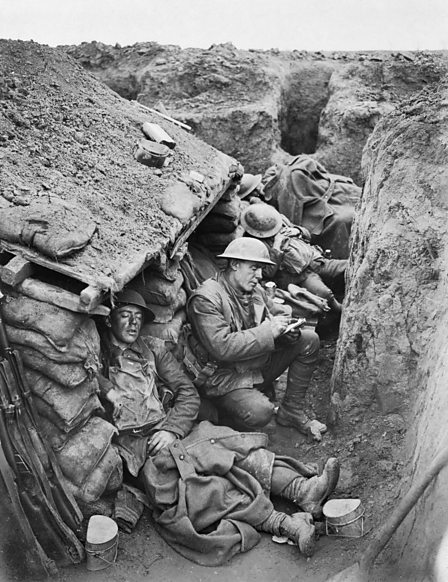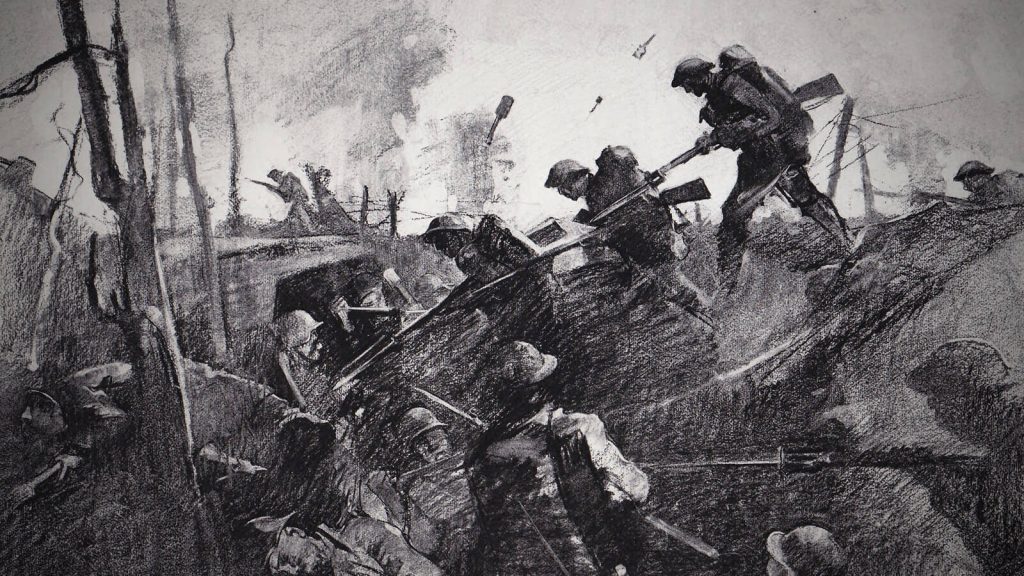Trenches And Trenchlife.

Trenches, long, deep ditches dug as protective defences are most often associated with World War I, and the results of trench warfare in that conflict were hellish indeed. Trench warfare in World War I was employed primarily on the Western Front, an area of northern France and Belgium that saw combat between German troops and Allied forces from France, Great Britain and later, the United States.

Although trenches were hardly new to combat, prior to the advent of firearms and artillery, they were used as defenses against attack, such as moats surrounding castles. But they became a fundamental part of strategy with the influx of modern weapons of war. Long, narrow trenches dug into the ground at the front, usually by the infantry soldiers who would occupy them for weeks at a time, were designed to protect World War I troops from machine-gun fire and artillery attack from the air.
As the Great War also saw the wide use of chemical warfare and poison gas, the trenches were thought to offer some degree of protection against exposure. While significant exposure to militarized chemicals such as mustard gas would result in almost certain death, many of the gases used in World War I were still relatively weak. Thus, trenches may have afforded some protection by allowing soldiers more time to take other defensive steps, such as putting on gas masks.
Trench Raiding

At least initially in World War I, forces mounted attacks from the trenches, with bayonets fixed to their rifles, by climbing over the top edge into what was known as “no man’s land,” the area between opposing forces, usually in a single, straight line and under a barrage of gunfire. Not surprisingly, this approach was rarely effective, and often led to mass casualties.
Later in the war, forces began mounting attacks from the trenches at night, usually with support of covering artillery fire. The Germans soon became known for effectively mounting nigh time incursions behind enemy lines, by sending highly trained soldiers to attack the trenches of opposing forces at what they perceived as weak points.
The men who made up raiding parties came from all walks of life – many would have volunteered for the job, but undoubtedly others were coerced by their comrades to tag along. Simply put, trench raiders needed to be both brutally vicious and exceptionally restrained and self-reliant. Crawling through no man’s land, beneath and over barbed wire, ready to fight at a moment’s notice was not for the faint of heart. Brutal, dirty trickery was also a necessity in order to survive. While the Germans were known to booby-trap potential souvenirs and corpses with explosives, Lieutenant Louis Keene of a Canadian Machine Gun Company reveals the Canadians were just as nasty.

When his men learned the Germans actually liked the cans of bully beef fed to Commonwealth troops, they began to throw cans of it over into the German lines:
“Throw one over… sounds like shuffling and getting out of the way are heard in the enemy trench. Fritz thinks it’s going to go off [as a grenade]. Pause, and throw another. Fritz not so suspicious this time. Keep on throwing until happy voices from enemy trenches shout, ‘More! Give us more!’ Then lob over as many hand grenades as you can pile into that part of the trench and tell them to share those too.”
If successful, these soldiers would breach enemy lines and circle around to attack their opponents from the rear, while their comrades would mount a traditional offensive at the front.
Diseases And Illness
With soldiers fighting in close proximity in the trenches, usually in unsanitary conditions, infectious diseases such as dysentery, cholera and typhoid fever were common and spread rapidly. Constant exposure to wetness caused trench foot, a painful condition in which dead tissue spread across one or both feet, sometimes requiring amputation. Trench mouth, a type of gum infection, was also problematic and is thought to be associated with the stress of nonstop bombardment.
As they were often effectively trapped in the trenches for long periods of time, under nearly constant bombardment, many soldiers suffered from “shell shock,” the debilitating mental illness known today as post-traumatic stress disorder (PTSD). It’s likely all of these factors, which stemmed from the widespread use of trench warfare, made World War I the deadliest conflict in global history to that point. It’s believed that as many as one in 10 of all fighting forces in the conflict were killed.
It was also the first conflict in world history to have more deaths caused from combat, rather than from disease spread during fighting. Trench warfare was also employed in World War II and in the Korean War to some degree, but it has not been used regularly during conflicts in the ensuing decades.
Extracted from Vimy Foundation and the Imperial War Museum

